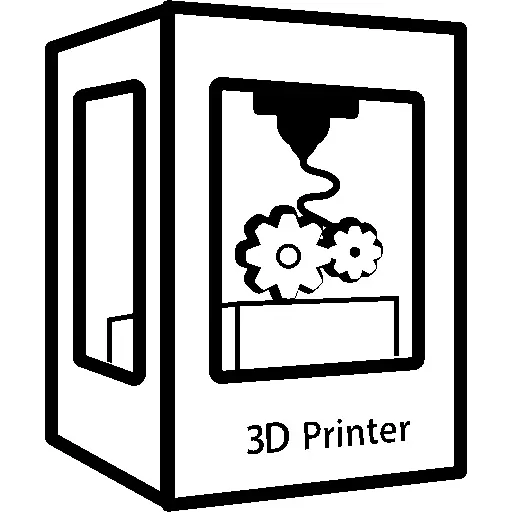I’ve been contemplating switching the rods that my X and Y axis travel on to linear rails instead. The current hardware is double SS rods with SG15 bearings, with an eccentric nut to adjust tension on the rods.
Unfortunately these rods are not evenly spaced on my Y-axis. They’re closer together at the back than at the front, deviating with 0.5mm. So the rollers are either too tight at the front, or too loose at the back, meaning the bed wobbles a bit when using the front of the bed, or skips layers due to higher resistance on the rollers when using the back of the bed. I could lower the movement speed, but I would rather fix the actual cause of the issue.
I have some suspicion that the rollers are also not rolling smoothly on the rods and sometimes slip/skip on them instead.
And then I came across the Voron switchwire and Ender3-to-switchwire conversions. Now I’m not really willing to fully rebuild the printer as a switchwire, but changing to linear rails on Y and X axes is not a massive rebuild and considerably cheaper. I would keep the existing threaded rods for the Z-axis.
I would use the hardware I have now (motors, pulleys, belts, bed-mount, belt tensioners) with minor modifications to accommodate the rails instead of the rods currently used.
Are there any caveats to be aware of when using linear rails?
Industrial linear rails can cost more than the printer itself. They should be mounted on proper flat surface like tooling plate (aluminium extrusions are far from best option) with extra attention to mounting tolerances. Smooth rods and “wheels” are way more forgiving to any missalignement.
Well…there are knockoffs like hiwin on ebay, and they seem to work for many people even mounted on aluminium extrusions. I think you should get your frame as square as possible first and see can you stay on wheels motion system to avoid upgrading cost. If frame is not good enough for wheels I would be afraid of even more issues with rails (binding and simmilar). But keep in mind I have no experience with your printer or any kind of wheel system and I never did upgrade from wheels to rails or anything like that. Im just trying to help, but hopefully someone who did that kind of upgrade can provide better answers
Hmm, fair point. I was not aware that the “cheap” linear rails would be just as bad as the design currently used. That’s a bit disheartening since the current design leaves a lot to be desired and honestly isn’t very good/well implemented.
I was under the impression that the linear rails (I’ve been looking for ones in the $40/pcs range for 320mm length) were a better solution.
My frame is as straight as I can get it, but that doesn’t really affect the movement on X or Y axes independently, only how well the print head (X)moves in relation to the bed (Y). I have issues on the axes independently, which is not really affected by the squareness of the frame, the motor and pulleys are mounted on the same extrusion as the axis for both X and Y.
My frame is as straight as I can get it, but that doesn’t really affect the movement on X or Y axes independently
I thought your frame acts also like a rail for wheels.
I was not aware that the “cheap” linear rails would be just as bad as the design currently used
I think they should be better, but smooth rods and wheels work quite good as well. Linear rails are better than smooth rods and smooth rods are better than wheels, but only if built correctly.
There is obviously some missalignement in your setup and the reason why you cant fix that might persist after upgrade. What concerns me the most is mounting Y linear rails not parallel enough (they might not move at all due to binding, while smooth rods or wheels could still work)
I thought your frame acts also like a rail for wheels.
There is a single extrusion, in the middle, running parallel to the Y axis below the bed, with rods on both sides that the bearings travel on. So it’s not affected by the squareness of the frame. I would only be using a single linear rail for the Y axis.
Likewise for the X axis, there is a single extrusion mounted between the two vertical extrusions, with rods on that the print head travels on, again this is not affected by squareness either. I would also only be using a single rail for the X axis.
Squareness of course comes in to play when the print head is positioned relative to the bed, but I actually have decent (and consistent) print quality.
Using single rail for each axis would exclude most of the issues I was concerned about. When I mentioned frame squareness, I was thinking about all geometric tolerances including rails being prallel/perpendicular to the frame.
Honestly my knowledge about linear rails becomes kinda useless after seing how people use them on their printers. Example: mounting them on alu extrusions or using them as a frame should be wrong, but looks like many people have good results.
Again, someone who solved that issue on the same or simmilar machine might be much more of a help than anything I wrote
New Lemmy Post: Linear rail mod on Anycubic Kobra 2 (https://lemmy.world/post/11978791)
Tagging: #3dprinting(Replying in the OP of this thread (NOT THIS BOT!) will appear as a comment in the lemmy discussion.)
I am a FOSS bot. Check my README: https://github.com/db0/lemmy-tagginator/blob/main/README.md


